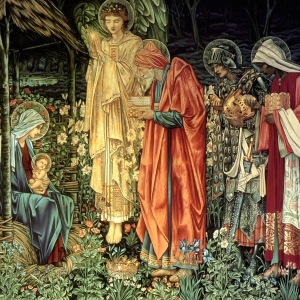
 AUL J. MURRAY, Director of Music and Organist of Church of Our Saviour, New York, New York, has set the Announcement of Easter and the Moveable Feasts for the Novus Ordo. He has kindly made it available here for free download. While, the chant can be found in the Roman Missal Appendix, it is very convenient to have the dates already in the music!
AUL J. MURRAY, Director of Music and Organist of Church of Our Saviour, New York, New York, has set the Announcement of Easter and the Moveable Feasts for the Novus Ordo. He has kindly made it available here for free download. While, the chant can be found in the Roman Missal Appendix, it is very convenient to have the dates already in the music!
Note, there are two versions: one for Dioceses that celebrate The Solemnity of the Ascension of the Lord on a Thursday, and those that move it to Sunday.
 N KEEPING WITH an ancient practice of the Holy Church, the moveable feasts of the coming year are announced following the Gospel. Interestingly, the rubrics indicate that the Gospel be sung! (However, even if read, that should not stop one from singing the proclamation):
N KEEPING WITH an ancient practice of the Holy Church, the moveable feasts of the coming year are announced following the Gospel. Interestingly, the rubrics indicate that the Gospel be sung! (However, even if read, that should not stop one from singing the proclamation):
On the Epiphany of the Lord, after the singing of the Gospel, a Deacon or cantor, in keeping with an ancient practice of the Holy Church, announces from the ambo the moveable feasts of the current year according to this formula:
This Epiphany proclamation is a reminder of the centrality of the resurrection of the Lord in the liturgical year and the importance of the great mysteries of faith, which are celebrated each year. Although optional, this chant is a unique expression (and fun) that connects our present day to our ancient roots of the Church. It is a tradition that reminds of who we are, where we come from, and where we are going!
• Dioceses that celebrate Ascension on Thursday • (in the United States: Ecclesiastical Provinces of Boston, Hartford, New York, Newark, Omaha, Philadelphia):
• PDF Download • The Announcement of Easter and the Moveable Feasts • 2019.
• Dioceses that celebrate Ascension on Sunday:
• PDF Download • The Announcement of Easter and the Moveable Feasts • 2019.
* * YouTube • Epiphany Proclamation • DEMO • (Ascension on a SUNDAY)
This chant is a wonderful way to add additional reverence to the liturgy. By leading us through key moments of salvation history, this proclamation reminds us—on the very day in which Christ is revealed to all nations—of Christ’s redeeming power in all our lives and to the whole world.
Soli Deo gloria
